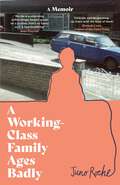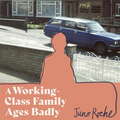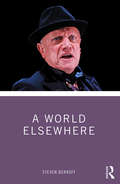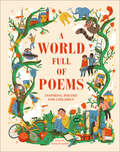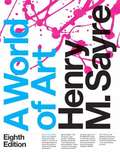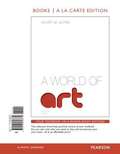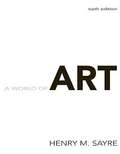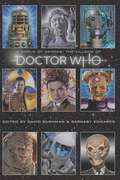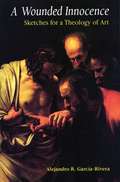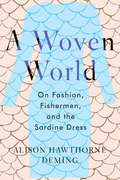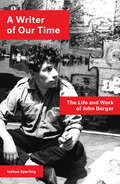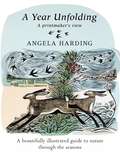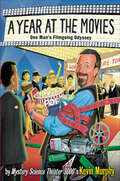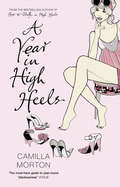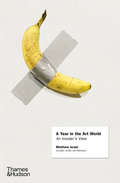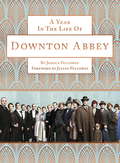- Table View
- List View
A Working-Class Family Ages Badly
by Juno Roche'Delicate and devastating. Up there with the best of them.' HANNAH LOWE, WINNER OF THE COSTA PRIZE'Roche is a charming, unflinchingly honest guide on a journey that's as funny as it is heart-breaking.' JUNO DAWSONHow does an untrained eye recognise the process of dying, when your mind is fixed firmly on living?A radically honest and uplifting memoir about defying death and learning to live.Juno Roche was born into a working-class family in London in the sixties, who dabbled in minor crime. For their father, violence and love lived together; for their mother, addiction was the only way to survive. School was a respite, but shortly after beginning their university course Juno was diagnosed with HIV, then a death sentence.Juno is a survivor; they outlived their diagnosis, got a degree and became an artist. But however hard you try to take the kid out of the family, some scars go too deep; trying to run from AIDS and their childhood threw Juno into dark years of serious drug addiction, addiction often financed by sex work.Running from home eventually took Juno across the sea to a tiny village in Spain, surrounded by mountains. Only once they found a quiet little house with an olive tree in the garden did Juno start to wonder if they had run too far, and whether they have really been searching for a family all along.In an incredibly honest and brave book, Juno takes us through the moments of their life: Mum sending Christmas cards containing Valium, drug withdrawal on a River Nile cruise, overcoming their father's violence and finding their dream house in Spain. Showing immense resilience, Juno's memoir is a book about what it means to stay alive.Emotional, tragic and incredibly funny, A Working-Class Family Ages Badly is an unforgettable must-read memoir for anyone who loves Educated, Deborah Levy and Motherwell.'Full of heart, wit and charm. I'm obsessed with this book.' Travis Alabanza 'So gripping, I had to make myself slow down to appreciate the quality of the writing. Such a powerful story and so beautifully written.' Paul Burston'Utterly unique. Nobody can write with warmth and confrontation the way Juno can.' Tom Rasmussen'Compassionate, dreamlike and deeply moving.' CN Lester 'Should be read by everyone.' Irenosen Okojie 'Juno has always been a literary voice like no one else, scathingly honest and endlessly expansive.' Amelia Abraham
A Working-Class Family Ages Badly: 'Remarkable' The Observer (Karen Pirie #13)
by Juno Roche'An incredibly honest tale of survival, escape and resilience' The Observer 'Roche is a charming, unflinchingly honest guide on a journey that's as funny as it is heart-breaking.' JUNO DAWSONHow does an untrained eye recognise the process of dying, when your mind is fixed firmly on living?A radically honest and uplifting memoir about defying death and learning to live.Juno Roche was born into a working-class family in London in the sixties, who dabbled in minor crime. For their father, violence and love lived together; for their mother, addiction was the only way to survive. School was a respite, but shortly after beginning their university course Juno was diagnosed with HIV, then a death sentence.Juno is a survivor; they outlived their diagnosis, got a degree and became an artist. But however hard you try to take the kid out of the family, some scars go too deep; trying to run from AIDS and their childhood threw Juno into dark years of serious drug addiction, addiction often financed by sex work.Running from home eventually took Juno across the sea to a tiny village in Spain, surrounded by mountains. Only once they found a quiet little house with an olive tree in the garden did Juno start to wonder if they had run too far, and whether they have really been searching for a family all along.In an incredibly honest and brave book, Juno takes us through the moments of their life: Mum sending Christmas cards containing Valium, drug withdrawal on a River Nile cruise, overcoming their father's violence and finding their dream house in Spain. Showing immense resilience, Juno's memoir is a book about what it means to stay alive.Emotional, tragic and incredibly funny, A Working-Class Family Ages Badly is an unforgettable must-read memoir for anyone who loves Educated, Deborah Levy and Motherwell.'Delicate and devastating. Up there with the best of them.' HANNAH LOWE, WINNER OF THE COSTA PRIZE'Full of heart, wit and charm. I'm obsessed with this book.' Travis Alabanza 'So gripping, I had to make myself slow down to appreciate the quality of the writing. Such a powerful story and so beautifully written.' Paul Burston'Utterly unique. Nobody can write with warmth and confrontation the way Juno can.' Tom Rasmussen'Compassionate, dreamlike and deeply moving.' CN Lester 'Should be read by everyone.' Irenosen Okojie 'Juno has always been a literary voice like no one else, scathingly honest and endlessly expansive.' Amelia Abraham
A World Elsewhere
by Steven BerkoffA World Elsewhere is Steven Berkoff’s bold attempt to describe his multifarious theatrical works. Berkoff outlines the methods that he uses, first of all as an actor, secondly as a playwright and thirdly as theatre director, as well as those subtle connections in between, when one discipline melds effortlessly into another. He examines the early impulses that generated his works and what drove him to give them form, as well as the challenges he faced when adapting the work of other authors. Berkoff discusses some of his most difficult, successful and unique creations, journeying through his long and varied career to examine how they were shaped by him, and how he was shaped by them. The sheer scale of this book offers a rare experience of an accomplished artist, combined with the honesty and insight of an autobiography, making this text a singular tool for teaching, inspiration and personal exploration. Suitable for anyone with an interest in Steven Berkoff and his illustrious career, A World Elsewhere is the part analysis and part confession of an artist whose work has been performed all over the world.
A World Full of Poems
by DKA gorgeously illustrated introduction to poetry for children, featuring poems about everything from science, sports, and space, to friendship, family, and feelings.This thoughtfully crafted anthology is perfect for children new to verse and for young poetry fans seeking out new favorites. Explore poetry from a diverse selection of contemporary and historical poets, covering a broad range of topics—from personal subjects like emotions and family, to the wonders of the natural environment. Carefully selected works encourage children to see the poetry in everything and to embrace the beauty of their everyday lives.Prompts and activities inspire children to create their own poetry, and devices like rhyme, repetition, and alliteration are introduced and explained in a fun and accessible manner.
A World of Art
by Henry SayreA World of Art fosters the critical thinking and visual literacy skills students need to understand art from around the globe. Noted author and educator Henry Sayre teaches students how to ask the right questions about the visual world that surrounds us, and to then respond meaningfully to the complexity of that world. New to the eighth edition, seven thematic chapters help students better identify and understand major themes of art—such as “the cycle of life” and “the body, gender, and identity”—that transcend different eras and regions.
A World of Art (Seventh Edition)
by Henry M. SayreA World of Art is a fascinating book that welcomes all students to have an inner eye, think better and appreciate art.Henry M. Sayre explains that by appreciating art; you don't have to like it; but it advances your observation to a completely out of the world view.has proved helpful in several professions; medicine in the diagnostic and surgical processes, police department in observation and these are just examples. The world is filled with images and only if you are keen and actively observant would you be able to understand them. The formatting in this book will help you, the reader, take you through every step of the visual world.
A World of Art (Sixth Edition)
by Henry M. SayreWhy A World of Art? Henry Sayre wrote the first edition of World of Art because he wanted to use a text in his own art appreciation course that truly represented all artists, not just the Western canon found at that time in the other texts. He also wanted a text that fostered critical thinking through looking at, talking about, and questioning works of art for his students. We are proud to present the new sixth edition of World of Art, which further strengthens these two key aspects of the text while presenting hot topics like video and time-based media.
A World of Demons: The Villains of Doctor Who
by David BushmanThe first-ever essay anthology devoted solely to the villains the Doctor has encountered over the decades since Doctor Who's 1963 premiere -- including all of the usual suspects (Daleks, Cybermen, Weeping Angels, the Silence, etc.), plus plenty of surprises. &“One may tolerate a world of demons for the sake of an angel&”—Jean-Antoninette (&“Reinette&”) Poisson, aka Madame de Pompadour, &“The Girl in the Fireplace&” What a world of demons Doctor Who has presented us with over the past seven decades: from Daleks and Cybermen to Weeping Angels and the Silence, the greatest villains of the Who-niverse have achieved an iconic status all their own, cementing themselves in the minds of millions of viewers (why else would Parker Brothers have devised a version of Monopoly after them?). If, as the Seventh Doctor once said, "You can always judge a man by the quality of his enemies,&” the Doctor is great indeed, rescuing the universe time and again from some of the most formidable and terrifying villains in science fiction history. Now, for the first time, an entire anthology of essays is dedicated to deconstructing this gallery of blackguards. Who are the greatest Who villains of all time? Why are they so frightening? And—apologies to Shakespeare—what do they tell us about the villainy of our own fears? Featuring essays by Joseph Dougherty (executive producer, Pretty Little Liars; producer, thirtysomething), Steven Ashby, Anton Binder, Sarah Corey, Ken Deep, Jan Fennick, Hannah Friedman, Mark Givens, Nancy Hutchins, Jennie Jarvis, Don Klees, Chris Kocher, Robin Koman, Charles Martin, Michael Robinson, Steve Sautter, and Shane Thomas. Edited by David Bushman (Conversations with Mark Frost) and Barnaby Edwards (president, Doctor Who New York)
A World of Our Own: Women Artists Against the Odds
by Frances BorzelloA new edition of one of the first books to focus on the world of women artists and their practice. Women have always practiced as artists, but for centuries the art world considered them mere dilettantes. Their work was derided as second-rate, and they were considered intruders in a male profession. This study examines how, against the odds, they overcame these difficulties and shifts the focus away from women artists as "victims" to give an account of how they actually practiced their art. This stirring account documents the centuries- long struggle of gifted women who confronted the exclusionary tactics of a male-dominated art establishment but pressed ahead undaunted to gain acceptance as sought-after professionals. Art historian Frances Borzello takes readers deep into the restricted world of women artists of the past, showing how diligently they trained themselves, set up studios, and pursued sympathetic patrons. Starting with Renaissance painters Sofonisba Anguissola and Lavinia Fontana, the book reconstructs the changing world of women artists as social attitudes evolved. Seventeenth-century painters Artemisia Gentileschi and Judith Leyster enjoyed success by depicting subjects relevant to women, as did eighteenth- century greats Angelica Kauffman and Élisabeth Vigée-Lebrun with lucrative commissions. Further breakthroughs came in the nineteenth century as young hopefuls Mary Cassatt and Marie Bashkirtseff strove to be admitted to exhibiting societies and opened art schools. Finally, as equality for women advanced through the twentieth century, Augusta Savage, Georgia O'Keeffe, Frida Kahlo, Cindy Sherman, Mona Hatoum, and others led the way for today's talented women to secure their rightful place in the annals of art. Now fully revised and updated, Frances Borzello's engaging narrative continues to inspire.
A Wounded Innocence: Sketches For A Theology Of Art
by Alejandro R. Garcia-RiveraWhat is the theological significance of art? Why has the Church always encouraged the arts? What is so profoundly human about the arts? In A Wounded InnocenceAlejandro R. Garcia-Rivera answers these questions in a series of sketches" that are mixed spiritual and theological reflections on various works of art written in a poetic style. These reflections explore the relationship between the multi-dimensional spiritual and the arts. <P><P> The first *sketch, - *The Beginning of Art, - introduces the rest that go on to explore further the human, artistic, and theological implications of a wounded innocence. Each *sketch - reflects on a particular human work of art. Some are conventional works of art. Others may never find their way into a museum but, then, that is one of the implications coming out of this book. A museum does not define what a work of art is, its human depth does. In these deeply studied yet spiritually written reflections on each work of art, it is hoped that the reader will find his and her own creative depth described, perhaps even revealed. <P><P> A Wounded Innocenceis both inspiring and informative. Readers will learn about art, spirituality, and theology, and will find themselves inspired to look at works of art, and even to produce a work of art. It sets a new way of doing theology that is at the same time spiritual. More importantly, Garcia-Rivera describes a theology of art. <P><P> Chapters are *The Beginning of Art, - *The End of Art, - *Human Freedom and Artistic Creativity, - *Heaven-with-Us, - *The Human Aspect of Atonement, - *The Tyger and the Lamb, - and *A Wounded Innocence. - Includes black and white art. <P><P> Alejandro R. Garcia-Rivera, PhD, is associate professor of systematic theology at the Jesuit School of Theology at Berkeley. The author of numerous articles, he also wrote a Catholic Press Association award-winning book on theology and aesthetics titled The Community of the Beautiful(The Liturgical Press).
A Woven World: On Fashion, Fishermen, and the Sardine Dress
by Alison Hawthorne DemingPart memoir, part cultural history, A Woven World celebrates the fading crafts, industries, and artisans that have defined communities for generations.The desire to create is the cornerstone of civilization. But as we move into a world where machine manufacturing has nearly usurped craft, Alison Hawthorne Deming resists the erasure of our shared history of handiwork with this appeal for embracing continuity and belonging in a time of destabilizing change.Sensing a need to preserve the crafts and stories of our founding communities, and inspired by an exhibit at the Metropolitan Museum of Art&’s Costume Institute featuring Yves St. Laurent&’s &“sardine&” dress, Deming turned to the industries of her ancestors, both the dressmakers and designers in Manhattan in the nineteenth century and the fishermen on Grand Manan Island, a community of 2,500 residents, where the dignity of work and the bounty of the sea ruled for hundreds of years. Reweaving the fabric of those lives, A Woven World gives presence on the page to the people, places, and practices, uncovering and preserving a record of the ingenuity and dignity that comes with such work. In this way the lament becomes a song of praise and a testament to the beauty and fragility of human making.
A Writer of Our Time: The Life and Work of John Berger
by Joshua SperlingThe first intellectual biography of the life and work of John BergerJohn Berger was one of the most influential thinkers and writers of postwar Europe. As a novelist, he won the Booker prize in 1972, donating half his prize money to the Black Panthers. As a TV presenter, he changed the way we looked at art with Ways of Seeing. As a storyteller and political activist, he defended the rights and dignity of workers, migrants, and the oppressed around the world. “Far from dragging politics into art,” he wrote in 1953, “art has dragged me into politics.” He remained a revolutionary up to his death in January 2017.Built around a series of watersheds, at once personal and historical, A Writer of Our Time traces Berger’s development from his roots as a postwar art student and polemicist in the Cold War battles of 1950s London, through the heady days of the 1960s—when the revolutions were not only political but sexual and artistic—to Berger’s reinvention as a rural storyteller and the long hangover that followed the rise and fall of the New Left.Drawing on first-hand, unpublished interviews and archival sources only recently made available, Joshua Sperling digs beneath the moments of controversy to reveal a figure of remarkable complexity and resilience. The portrait that emerges is of a cultural innovator as celebrated as he was often misunderstood, and a writer increasingly driven as much by what he loved as by what he opposed. A Writer of Our Time brings the many faces of John Berger together, repatriating one of our great minds to the intellectual dramas of his and our time.
A Year Unfolding: A Printmaker's View
by Angela HardingA beautifully illustrated guide to nature through the seasons by much-loved printmaker Angela Harding.The cover of this stunning book has an exclusive triptych printed on the reverse - a perfect collector's itemThis stunning work, the first book that is solely dedicated to Angela's art, is a celebration of her beautiful prints, and a glimpse into her detailed and meticulous process.A Year Unfolding is a journey through Angela's year in nature watching the seasons unfold in front of her from her studio in Rutland, and giving the reader detail into how nature transforms and evolves over the course of the year.A Year Unfolding also tells the stories behind some of Angela's most popular images, giving context to Angela's celebrated work, as well as new art created specifically for the book.The beautiful illustrations and evocative imagery of the prose make this the perfect book for Angela's fans and readers and art lovers everywhere.
A Year Unfolding: A Printmaker's View
by Angela HardingA beautifully illustrated guide to nature through the seasons by much-loved printmaker Angela Harding.The cover of this stunning book has an exclusive triptych printed on the reverse - a perfect collector's itemThis stunning work, the first book that is solely dedicated to Angela's art, is a celebration of her beautiful prints, and a glimpse into her detailed and meticulous process.A Year Unfolding is a journey through Angela's year in nature watching the seasons unfold in front of her from her studio in Rutland, and giving the reader detail into how nature transforms and evolves over the course of the year.A Year Unfolding also tells the stories behind some of Angela's most popular images, giving context to Angela's celebrated work, as well as new art created specifically for the book.The beautiful illustrations and evocative imagery of the prose make this the perfect book for Angela's fans and readers and art lovers everywhere.Angela has created the covers for many bestselling books, including The Salt Path and The Wild Silence by Raynor Winn, October, October by Katya Balen, English Pastoral by James Rebanks, Christmas is Murder by Val McDermid and RSPB Birds among many others.
A Year at the Chateau: As seen on the hit Channel 4 show
by Dick Strawbridge Angel StrawbridgeTHE ENTERTAINING AND HEARTWARMING SUNDAY TIMES BESTSELLER.Like many couples, Dick and Angel had long dreamed of living in France, but where others might settle for a modest bolthole in the French countryside, the Strawbridges fell in love with a 19th-century fairytale château, complete with 45 rooms, seven outbuildings, 12 acres of land and its own moat.Throwing caution to the wind, Dick and Angel swapped their two-bedroom flat in East London for an abandoned and derelict castle in the heart of the Loire valley and embarked on the adventure of a lifetime with their two young children Arthur and Dorothy.Sharing their full journey for the first time, A Year at the Château follows Dick and Angel from when they first moved to France in the depths of winter and found bedrooms infested with flies, turrets inhabited by bats, the wind rattling through cracked windows, and just one working toilet, which flushed into the moat, through to the monumental efforts that went into readying the château for their unforgettable wedding and their incredibly special first Christmas.Along the way we'll read glorious descriptions of rural life in France, with charming characters, delicious food and wonderful seasonal produce, together with the extraordinary list of renovations and restorations Dick and Angel completed, many of which were never shown on TV.As warm and entertaining as their much-loved show, A Year at the Château is a truly irresistible story of adventure and heart, epic ambitions and a huge amount of hard graft.
A Year at the Chateau: As seen on the hit Channel 4 show
by Dick Strawbridge Angel StrawbridgeTHE ENTERTAINING AND HEARTWARMING SUNDAY TIMES BESTSELLER.Like many couples, Dick and Angel had long dreamed of living in France, but where others might settle for a modest bolthole in the French countryside, the Strawbridges fell in love with a 19th-century fairytale château, complete with 45 rooms, seven outbuildings, 12 acres of land and its own moat.Throwing caution to the wind, Dick and Angel swapped their two-bedroom flat in East London for an abandoned and derelict castle in the heart of the Loire valley and embarked on the adventure of a lifetime with their two young children Arthur and Dorothy.Sharing their full journey for the first time, A Year at the Château follows Dick and Angel from when they first moved to France in the depths of winter and found bedrooms infested with flies, turrets inhabited by bats, the wind rattling through cracked windows, and just one working toilet, which flushed into the moat, through to the monumental efforts that went into readying the château for their unforgettable wedding and their incredibly special first Christmas.Along the way we'll read glorious descriptions of rural life in France, with charming characters, delicious food and wonderful seasonal produce, together with the extraordinary list of renovations and restorations Dick and Angel completed, many of which were never shown on TV.As warm and entertaining as their much-loved show, A Year at the Château is a truly irresistible story of adventure and heart, epic ambitions and a huge amount of hard graft.
A Year at the Met
by Patrick J. SmithA study of the Metropolitan Opera presents a behind-the-scenes look at its public, private, artistic, financial, and organizational operations and discusses the traditions, achievements, and innovations of the opera company.
A Year at the Movies: One Man's Filmgoing Odyssey
by Kevin MurphyFor some of us, moviegoing is an occasional pleasure. Kevin Murphy made it his obsession, and he did it for you.Mr. Murphy, known to legions of fans as Tom Servo on the legendary TV series Mystery Science Theater 3000, went to the movies every day for a year. That's every single day, people. For a whole fricken' year. And not only did he endure, he prevailed -- for this is the hilarious, poignant, fascinating journal of his adventures: the first book about the movies from the audience's point of view.Kevin went to the multiplex, sure. But he didn't stop there. He found the world's smallest commercial movie theater. Another one made completely of ice. Checked out flicks in a tin-roofed hut in the South Pacific. Tooled across the desert from drive-in to drive-in in a groovy convertible. Lived for a week solely on theater food. Took six different women to the same date movie. Dressed up as a nun for the Sing-Along Sound of Music in London. Sneaked into the Cannes and Sundance film festivals. Smuggled an entire Thanksgiving dinner into a movie theater. And saw hundreds of films, from the Arctic Circle to the Equator, from the sublime to the unspeakable. Come along on a joyous global celebration of the cinema with a man on a mission -- to spend A Year at the Movies.
A Year in High Heels
by Camilla MortonIf your resolutions tend to look much the same from one year to another and you are suffering from the suspicion that someone, somewhere is having more fun that you, then you need something to revitalise your lust for life. A YEAR IN HIGH HEELS is here to help. This book will guide you through the months with a perfectly co-ordinated combination of culture and challenges. With a monthly muse to inspire, and a suggested title for that soon-to-be-formed book club, dumbing down is so last season. Erin O'Connor, Diane von Furstenberg, Matthew Williamson and others share their secrets about their favourite places - so the next time you check in you'll know what to check out - while Dita von Teese, Anya Hindmarch and Christian Lacroix show you how to undress, how to go green and how to appreciate opera. Eclectic, practical and fantastical, A YEAR IN HIGH HEELS is crammed with fascinating stories, inspiring ideas and surprisingly sensible advice. Forget who, when, why and what to wear. Get ready to wow!
A Year in High Heels: The Girl's Guide To Everything From Jane Austen To The A-list
by Camilla MortonIf your resolutions tend to look much the same from one year to another and you are suffering from the suspicion that someone, somewhere is having more fun that you, then you need something to revitalise your lust for life. A YEAR IN HIGH HEELS is here to help. This book will guide you through the months with a perfectly co-ordinated combination of culture and challenges. With a monthly muse to inspire, and a suggested title for that soon-to-be-formed book club, dumbing down is so last season. Erin O'Connor, Diane von Furstenberg, Matthew Williamson and others share their secrets about their favourite places - so the next time you check in you'll know what to check out - while Dita von Teese, Anya Hindmarch and Christian Lacroix show you how to undress, how to go green and how to appreciate opera. Eclectic, practical and fantastical, A YEAR IN HIGH HEELS is crammed with fascinating stories, inspiring ideas and surprisingly sensible advice. Forget who, when, why and what to wear. Get ready to wow!
A Year in the Art World
by Matthew IsraelAn insider’s detailed chronicle of the inner workings of the contemporary art world. The world of contemporary art has become more globalized and transparent in the last few decades, yet it is still perceived as closed-off and obscure. In A Year in the Art World, Matthew Israel takes the reader on a cross-continental journey through a year in the field of art, lifting the veil on a culture that emerges as diverse, adventurous, nuanced, and meaningful. From Los Angeles and New York to Paris and Hong Kong, Israel encounters artists, curators, critics, gallerists, and institutions, uncovering the working lives of these art-world figures from the renowned to the unseen. Drawing on exclusive interviews and expertly researched content, Israel ventures into the inner workings of the art industry to ask: What is it that people in the art world actually do? What drives interest in working with art? How do artworks acquire value? And how has technology transformed today’s art world? Anchoring the narrative in the history, economics, and cultural dynamics of the field, this fascinating story reveals how “the art world” describes a realm that is both surprisingly vast and deeply interconnected.
A Year in the Life of Downton Abbey (companion to series 5)
by Jessica FellowesIt's 1924 and there have been many changes in the world of Downton Abbey since we were first welcomed by the family and their servants twelve years ago. A generation of men has been tragically lost at the front, there are once again children breathing new life into the great house, a chauffeur now sits at the Grantham dinner table and hems are up by several inches.Yet despite all of this unsettling upheaval, it is a comfort to find that many things at Downton remain largely unchanged. There are still parties to be thrown, summer fetes to be organised, menus to be planned and farms to be run. Join us, then, as we explore the seasonal events and celebrations of the great estate - Christmas, Easter, the debutante season, the hunt and more - and peer with us through the prism of the house as we learn more about the lives of our favourite characters, the actors who play them, and those who create the world we love so much.Packed full of exclusive new photography and brimming with traditional British recipes for each calendar month, such as Eton mess and sloe gin, this beautiful book takes us on a fascinating journey through a year in the life of Downton Abbey.
A Year in the Life of Downton Abbey (companion to series 5)
by Jessica FellowesIt's 1924 and there have been many changes in the world of Downton Abbey since we were first welcomed by the family and their servants twelve years ago. A generation of men has been tragically lost at the front, there are once again children breathing new life into the great house, a chauffeur now sits at the Grantham dinner table and hems are up by several inches.Yet despite all of this unsettling upheaval, it is a comfort to find that many things at Downton remain largely unchanged. There are still parties to be thrown, summer fetes to be organised, menus to be planned and farms to be run. Join us, then, as we explore the seasonal events and celebrations of the great estate - Christmas, Easter, the debutante season, the hunt and more - and peer with us through the prism of the house as we learn more about the lives of our favourite characters, the actors who play them, and those who create the world we love so much.Packed full of exclusive new photography and brimming with traditional British recipes for each calendar month, such as Eton mess and sloe gin, this beautiful book takes us on a fascinating journey through a year in the life of Downton Abbey.
A Year in the Life of William Shakespeare
by James S. ShapiroThose with a keen interest in Shakespeare will enjoy insight into the man, his work and his times. Shapiro knows his readership will be a motivated one and is counting on the subject material to drive them to carry on. What makes the book an engaging read is the political context it provides. We begin to understand why he wrote some of his plays and certain characters, and what pressures he would've dealt with keeping his craft "cutting-edge", but popular to the masses, as well as staying in the Queen's favor.
A Year of Creativity: A Craft Date Planner to Meet, Share, and Create
by Petra Hoeksema Lidy Nooij Miriam Catshoek Bregje KoningsDo something creative every day! In A Year of Creativity, learn how to throw the perfect creative party with your friends—with organizing tips, 25 project ideas, and even recipes for snacks. Can&’t meet in person? Organize a virtual party to connect with others as you work on the same craft project. Then share your unique results with creative people all over the world. A "craft date" is a fun get-together with a handful of creative friends in which you surprise each other with craft and DIY projects using cool materials, inspire each other, and make beautiful things together. At each date, a group of participants share a self-made project to be re-created by the other attendees. Materials are individualized for each participant and given as a unique personal gift along with the instructions for the project. A craft date is different than a workshop since you get to choose the lovely people that you invite, and as the organizer, you get to participate in all the projects. Invitees can put their own spin on the project by using their favorite colors, materials, or techniques. This way you end up with a range of different interpretations and results, leading to new inspiration and ideas.A Year of Creativity is a book for everyone with a basic knowledge of crocheting, knitting, and sewing. It does not teach you how to crochet or explain how a sewing machine works. There are plenty of other books for that. What it does do is inspire crafting enthusiasts to make something together, learn from each other, and have fun doing it. You'll find within: An introduction to craft dates and how they workTips on planning your craft date eventsPlenty of project ideas (short, long, and cooperative)Plus recipes for party dishes that keep the creative juices flowing You will share ideas, discover new inspiration, and find new friends while creating uniquely beautiful aprons, knit garlands, infinity scarves, haberdashery bags, cards, pencil cases, and more. Have you had a great craft date or are you working on a neat project and want to show it off? There&’s a place for this in the craft dates community. On Instagram, for example, you can tag your photos with, or search for the hashtag #craftdates. You can have a look at each other&’s work, drum up inspiration for your own dates, invite your Insta-friends, or organize a "blind date" with creative people from your town or city that you don&’t know yet. A whole world will open up. A very creative world is waiting for you in A Year of Creativity.
